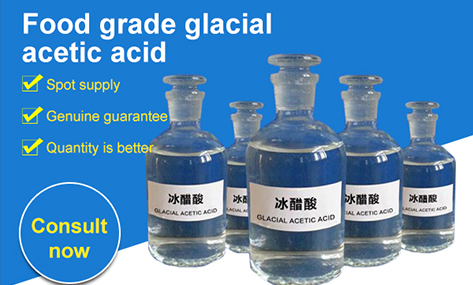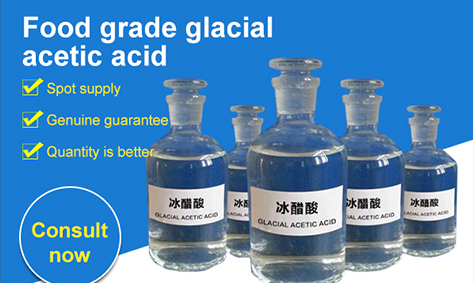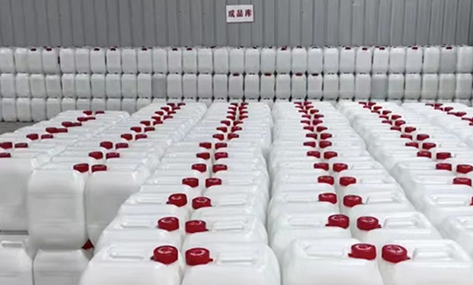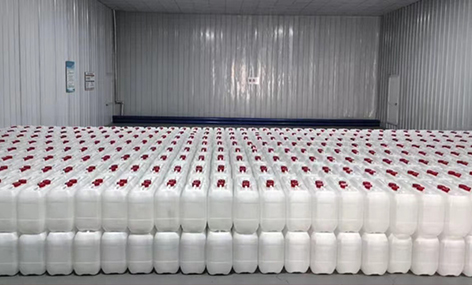
jul . 25, 2025 13:01 Back to list
Pure Food Grade Glacial Acetic Acid - High Purity & Food Safe
Industry Applications, Technical Specifications, and Quality Standards
Introduction
Food grade glacial acetic acid (CH₃COOH) is a fundamental organic compound widely recognized as the primary component responsible for vinegar's distinctive sour taste and pungent aroma. As a designated acidity regulator (E260) in the food additive classification system, this highly purified form of acetic acid meets stringent safety requirements for consumption and food processing applications. With a concentration of 99-100%, glacial acetic acid solidifies at temperatures below 16.7°C, explaining its "glacial" nomenclature.
The global market for food grade glacial acetic acid is projected to reach $13.2 billion by 2028, growing at a CAGR of 5.7% from 2023 onward (Food Chemical News, 2023). This growth is fueled by increasing demand in food preservation, flavor enhancement, and pH adjustment applications across processed foods, condiments, and beverages. This guide explores technical specifications, industry applications, safety considerations, and quality standards essential for manufacturers and food processors.
Hebei Yishan Spices Co., Ltd.
Leading manufacturer of premium food grade glacial acetic acid meeting international quality standards. We specialize in producing high-purity acetic acid solutions for diverse food industry applications.
📞 Phone: +86 13930492327
📱 Mobile: +86 15003215644
✉️ Email: yishanxiangliao@163.com
🏢 Address: 200 meters northeast of the intersection of East Airport Road and Airport North Street, Zengcun Town, Shijiazhuang City, Hebei Province
🌐 Website: https://www.ysxlglacialaceticacid.com
Product Overview
Acetic acid, an organic compound belonging to the carboxylic acid family, is widely present in nature and recognized as the source of sourness and characteristic pungent odor in vinegar. In food-grade applications, glacial acetic acid (a 99-100% concentration) requires specialized production processes to achieve pharmaceutical and food safety standards. Food grade glacial acetic acid serves multiple functions:
- Acidity regulator (E260) adjusting pH in food systems
- Preservative inhibiting microbial growth in acidic environments
- Flavor enhancer in condiments, dressings, and sauces
- Chemical intermediate in food-grade additives manufacturing
- Vinegar production through controlled dilution and fermentation
Our food grade glacial acetic acid undergoes triple-distillation purification processes to achieve 99.8-100% concentration with non-detectable heavy metals (lead, arsenic, mercury below 0.1 ppm) and meets stringent requirements outlined in Food Chemicals Codex (FCC) and JECFA specifications. Packaging includes specialized chemical-grade polyethylene container111s in 25kg, 200kg, and IBC tank (1000kg) configurations.




Technical Specifications
Our food grade glacial acetic acid exceeds international standards for purity and safety. Below are key technical parameters compared with industry benchmarks:
| Parameter | Industry Standard (FCC) | Yishan Premium Grade | Test Method |
|---|---|---|---|
| Assay (CH₃COOH) | ≥99.5% | 99.8-100.0% | USP Titration |
| Appearance | Clear, colorless liquid | Clear, colorless liquid | Visual Inspection |
| Freezing Point | ≥14.8°C | 15.6-16.7°C | ASTM D852 |
| Residue After Ignition | ≤0.002% | ≤0.001% | USP 〈281〉 |
| Heavy Metals (as Pb) | ≤0.0002% | USP 〈231〉 | |
| Formic Acid & Oxidizable Impurities | Pass test | Pass test (≤0.08%) | USP 〈401〉 |
| Chroma (Pt-Co scale) | ≤10 | ≤5 | ASTM D1209 |
| Permanganate Time | ≥60 minutes | ≥120 minutes | GB/T 1628 |
Industry Applications
Food grade glacial acetic acid serves versatile functions in the food manufacturing sector:
1. Condiment Production
Diluted to 4-8% solutions as vinegar base for mustards, ketchup, mayonnaise, and salad dressings. Effective pH regulator extending shelf-life by creating unfavorable environment for spoilage microorganisms. The acidity level of food grade glacial acetic acid solutions effectively inhibits growth of E. coli and Salmonella at pH below 4.5 (Journal of Food Protection, 2022).
2. Bakery Preservation
0.1-0.3% concentration extends mold-free shelf life in bread and baked goods by 40-80% compared to conventional propionates (Baking Science & Technology, 2023).
3. Pickling & Fermentation
Standardizes acetic acid content at 0.5-2.0% in pickle brines ensuring consistent preservation effectiveness and flavor profile while inhibiting undesirable microflora.
4. Beverage Acidulation
Adjusts tartness in non-carbonated drinks and kombucha at 0.005-0.03% concentration while meeting FDA GRAS (Generally Recognized as Safe) requirements.
5. Dairy Product Processing
Precipitates casein proteins in cheese manufacturing through pH-driven isoelectric precipitation at precisely controlled concentrations.
Quality & Safety Standards
Food safety standards require food grade glacial acetic acid to meet stringent specifications beyond technical-grade acetic acid:
- Compliance: FCC Grade, FDA 21 CFR, EU Regulation (EC) No 1333/2008, JECFA
- Heavy Metal Limits: Arsenic ≤1 ppm, Lead ≤0.5 ppm, Mercury ≤0.1 ppm
- Microbiological: Total Plate Count ≤100 CFU/ml, Yeast/Mold ≤10 CFU/ml
- Residual Solvents: Methanol ≤50 ppm, Benzene ≤2 ppb (GC-MS testing)
- Traceability: Lot-controlled production with Batch Certificates of Analysis
Proper handling requires chemical-resistant PPE including neoprene gloves, face shields, and vapor respirators when handling concentrated solutions due to corrosive properties (pH 2.4 at 1% concentration). Storage recommendations include dedicated chemical-compatible HDPE container111s at temperatures between 15-25°C in well-ventilated areas.
Request Certificate of AnalysisProfessional FAQ
References:
1. Food Chemical Codex (FCC 12) - Acetic Acid, Glacial Monograph. https://www.foodchemicalscodex.org/
2. JECFA Specifications for Acetic Acid (2023). FAO JECFA Monographs 31. https://www.fao.org/food/food-safety-quality/scientific-advice/jecfa/en/
3. "Microbial Inhibition by Weak Acid Preservatives" - Journal of Food Protection (2022). https://meridian.allenpress.com/jfp
4. "Acetic Acid Applications in Food Processing" - Food Technology Magazine (2023). https://www.ift.org/news-and-publications/food-technology-magazine
5. Global Acetic Acid Market Analysis Report 2023-2028. https://www.foodchemicalnews.com
-
Glacial Acetic Acid For Sale | High Purity Anhydrous & NFPA Compliant
NewsJul.25,2025
-
Pure Food Grade Glacial Acetic Acid - High Purity & Food Safe
NewsJul.25,2025
-
Food Grade Glacial Acetic Acid - Hebei Yishan Spices Co., Ltd.|Purity, Safety, Industrial Use
NewsJul.22,2025
-
Food Grade Glacial Acetic Acid-Hebei Yishan Spices Co., Ltd.|High Purity&Food-Grade Certification
NewsJul.21,2025
-
Food Grade Glacial Acetic Acid-Hebei Yishan Spices Co., Ltd.|High Purity, Industrial & Food Applications
NewsJul.21,2025
-
Food Grade Glacial Acetic Acid-Hebei Yishan Spices Co., Ltd.|High Purity, Industrial & Food Applications
NewsJul.21,2025
